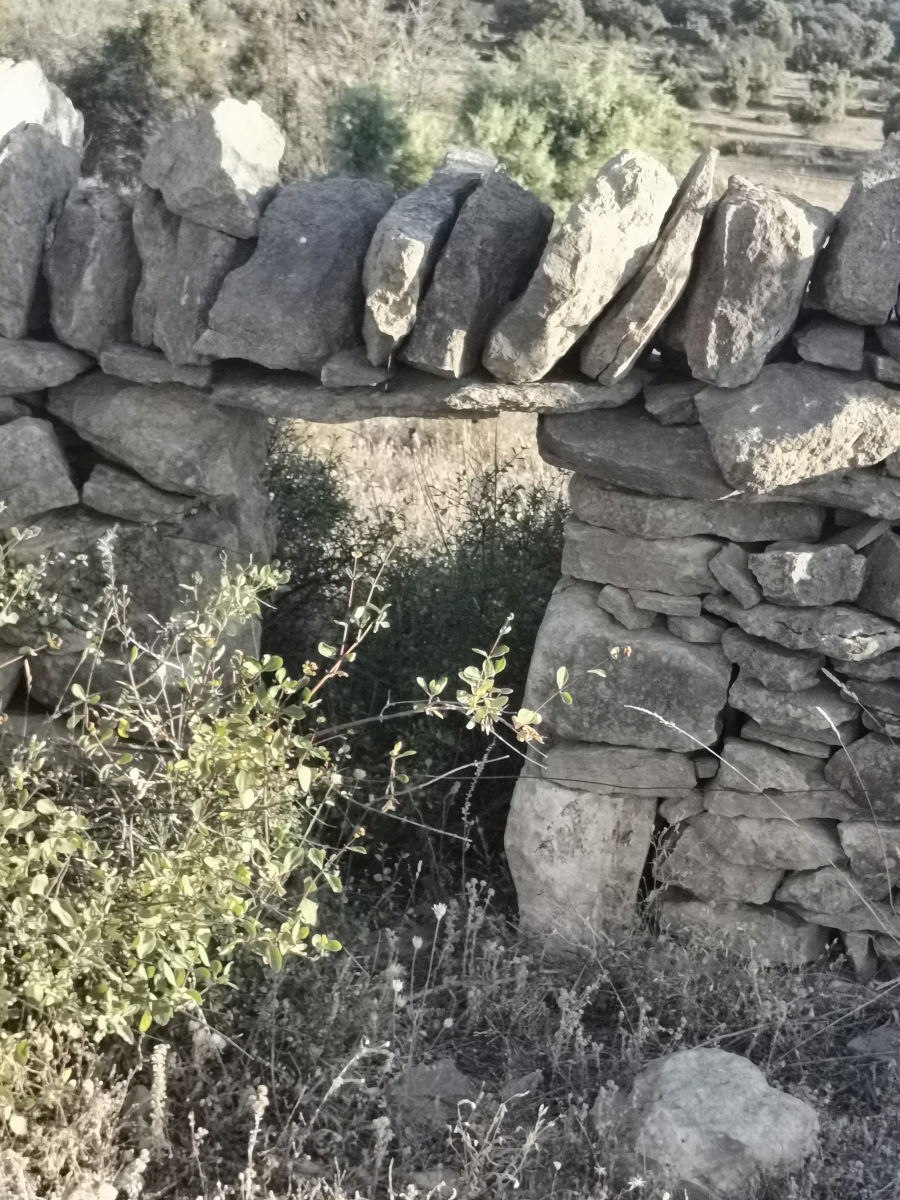
Agroecological route (1.5 h). This route includes the traditional agriculture and livestock of the area, the typical vegetation, as well as different traditional constructions and remains of an ancient Iberian settlement.
At the first stop you can see the old water system that fed the mill (1), where hides were also tanned and fiber was extracted from hemp. At the second stop, you can contemplate a hundred year old, now scarce in the region due to over-exploitation. Later you visit the old house as was during the era of the working mill(3). At stop 4 you can see how the land was cultivated, taking advantage of the orography of the land, targeting fruit trees in the most humid and protected areas. At point 5 you can see from the outside an old community corral where the surrounding sheep were kept on a 3.5 hectare area closed by dry stone.
Once inside the enclosure you can see what may be an ancient Iberian settlement, two old buildings for shepherds' shelters, and a sheep counter. During the tour you will see large sabinas and oaks, as well as a multitude of junipers. These grasslands are made up of small woody bushes and numerous drought-resistant perennial grasses. Among the most frequent herbaceous plants we find the lastón (Brachypodium retusum), the thyme and the gorse, together with some shrubs such as the sessile juniper or the miera juniper (Juniperus oxycedrus).
Being a high point of the farm, spectacular views of the area are contemplated, including the hermitage of San Marcos.



